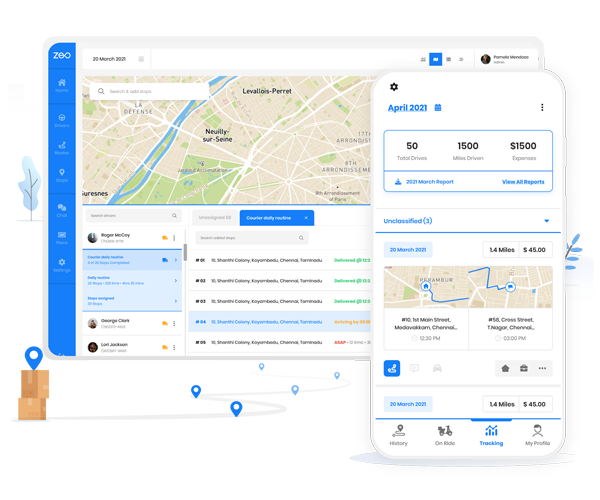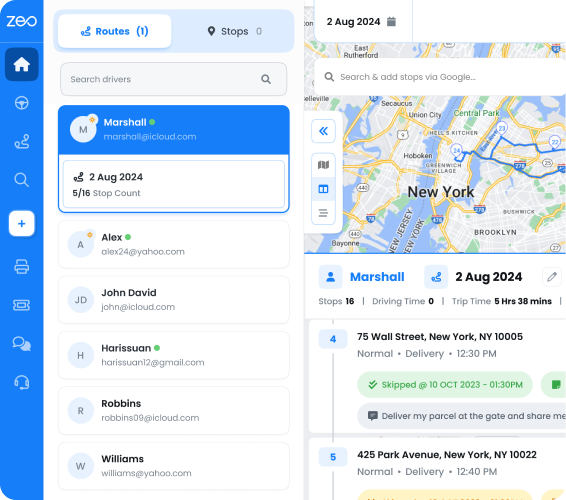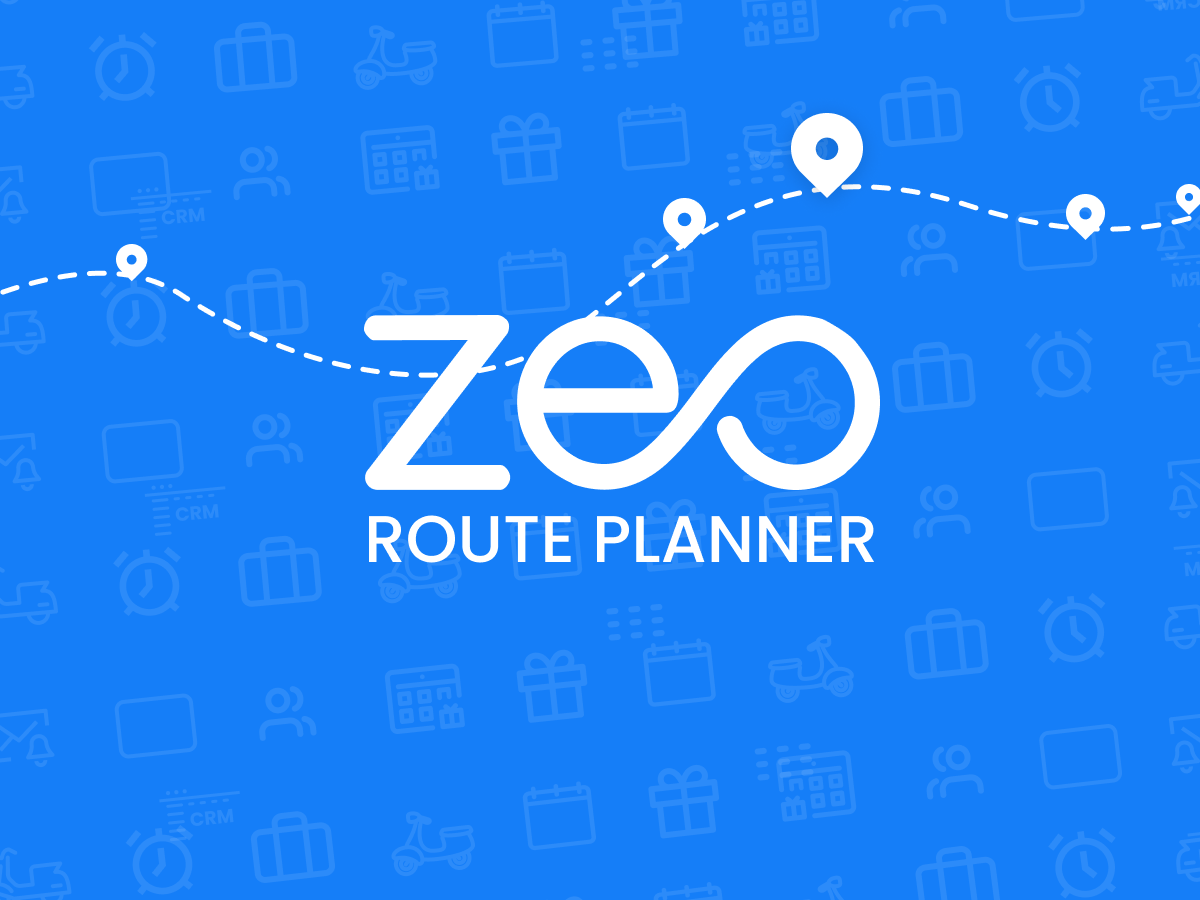In recent years, the rise of e-commerce and the demand for faster and more convenient delivery options has led to the emergence of hyperlocal delivery services.
The hyperlocal delivery apps revenue was US$ 952.7 million in 2021 and is expected to reach US$ 8856.6 million.
As hyperlocal delivery gains more traction and consumers get used to getting their deliveries almost instantly, there will be no going back!
Let’s understand what hyperlocal delivery is, how it is different from last-mile delivery, the challenges it involves, and how route optimization can help overcome the challenges.
What is hyperlocal delivery?
Hyperlocal means a small geographical area. Hyperlocal delivery refers to the delivery of goods and services from local stores or businesses directly to customers in a limited area or pin code. It typically involves the use of technology such as mobile apps, websites, and logistics platforms to facilitate the ordering, payment, and delivery process.
Hyperlocal delivery enables speedy fulfillment of customer orders within 15 minutes to a couple of hours. It is well-suited for the delivery of items that are needed at short notice such as groceries, medicines, and restaurant food. Household services like repairs, salon service, cleaning, pest control, etc. also come under hyperlocal delivery.
Let’s look at an example – A customer is not feeling well and wants a particular medicine to be delivered to their doorstep. He/she can go to a hyperlocal delivery platform providing the delivery of pharmaceuticals and place an order. The delivery platform will secure the medicine from a local store and deliver it to the customer within the promised ETA.
Hyperlocal delivery benefits the customers in terms of convenience and benefits the local stores in terms of wider customer reach.
Difference between hyperlocal delivery and last-mile delivery
Both hyperlocal delivery and last-mile delivery involve the delivery of goods from a store/warehouse to the customer’s doorstep. But there are some fundamental differences between the two:
- Last-mile delivery can cater to a much larger geographical area whereas hyperlocal delivery serves limited areas.
- Last-mile delivery takes longer for the delivery to be completed. Hyperlocal delivery is executed within a few hours.
- Hyperlocal delivery is usually done for smaller items with lesser weight and volume. Last-mile delivery can be done for any product irrespective of its weight and volume.
- Hyperlocal delivery is suitable for limited types of products like groceries, medicines, etc. but last-mile delivery can be done for anything from electronics to apparel.
What are the challenges of hyperlocal delivery?

increase fuel savings
Hassle Free Deliveries & Pickups!
Optimize routes with our algorithm, reducing travel time and costs efficiently.
Get Started for Free
- Increasing customer expectations
Customer expectations in terms of delivery speed are increasing. They want the items to be delivered as soon as possible. It’s challenging to meet expectations while ensuring the safety of delivery drivers.
- Inefficient routes
When the delivery drivers don’t follow an optimized route it often leads to late deliveries and also adds to the costs.
- Adhering to ETA
Communicating an accurate ETA to the customer and adhering to it is a challenge. Customers want visibility into the movement of their orders. Ensuring that the order reaches on time adds to the pressure when the order already has a tight delivery window.
- Old technology and software
Using traditional software slows you down when you need to have efficient business operations. Relying on outdated technology may lead to poor route planning and capacity utilization. It also doesn’t provide real-time tracking capabilities.
- Errors in deliveries
When the volume of orders is high, it can lead to deliveries being made to the wrong address. Making multiple trips to the same address increases the cost of delivery and negatively impacts the bottom line.
- Managing delivery workforce
It becomes a challenge to manage the delivery workforce when the number of orders spikes suddenly. While it can be anticipated on festivals and special days, the increase in orders within a day is difficult to manage with a fixed number of delivery drivers.
How route optimization helps crack hyperlocal delivery?
Route optimization plays a key role in ensuring smooth hyperlocal delivery operations.
- Faster deliveries
The delivery drivers are able to deliver faster when they have an optimized route at their disposal. Route optimization software provides not only the shortest route in terms of distance but also the most efficient route in terms of time and cost.
Read more: 5 Ways To Optimize Delivery Routes For Better Efficiency - Tracking visibility
The delivery manager gets visibility into the progress of the delivery with the help of a route planner. It allows them to take quick action In case of any unexpected delays.
- Accurate ETAs
Route optimization software provides you with accurate ETAs and the same can be communicated to the customer.
- Optimum utilization of workforce
While planning and allocating the route it takes into account the availability of the drivers and the capacity of the vehicles to ensure maximum utilization.
- Customer communication
The delivery drivers can directly communicate with the customer via the route planner app. They can send a customized message along with the tracking link to keep them updated about the progress of their order. This enhances customer satisfaction.
Hop on a 30-minute demo call to understand how Zeo Route Planner can streamline your deliveries!
Conclusion
Building a successful hyperlocal delivery business is extremely challenging. But given the increasing demands of the customers, it’s the way to go forward. It requires a lot of effort in managing the deliveries. Leveraging software like route optimization provides strong support and makes the life of your delivery drivers easier!

Are you a fleet owner?
Want to manage your drivers and deliveries easily?
Grow your business effortlessly with Zeo Routes Planner – optimize routes and manage multiple drivers with ease.

increase fuel savings
Save $200 on fuel, Monthly!
Optimize routes with our algorithm, reducing travel time and costs efficiently.
Get Started for Free























